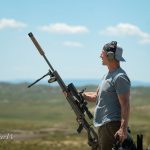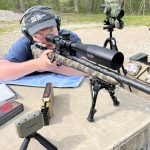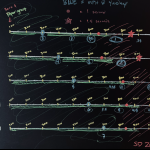
Common Mistakes Before You Pull the Trigger Look, we’ve all been there. You’re 800 yards out, wind’s whispering lies, and you’re lined up perfectly. You press the trigger, and the round lands in the dirt because you forgot to dial your elevation. I’ve literally done this myself in the last month, so I can tell …
- ChrisWay
- Posted onJul 4, 2025 at 2:00 PM
- 1 Comments
Finish entering the Rifle Barrel Blanks Giveaway! * indicates required Email Address *

This year I went to test some ideas from last years Nightforce ELR competition, and while those worked, the ELR gods threw me content and learning curveballs anyway.
- ChrisWay
- Posted onJun 12, 2025 at 12:57 PM
- 0 Comments
Gravity Ballistics and KraftWind methods can independently, as well as in combination, offer significant advantages to shooters.
- ChrisWay
- Posted onMay 22, 2025 at 7:50 PM
- 0 Comments
CR2 Shooting Solutions is proud to announce the launch of our new online education platform—now live on www.cr2ss.com. This marks a major step forward in our mission to provide accessible, high-quality training for shooters, tactical professionals, and outdoor enthusiasts across the country. Whether you’re looking to build foundational skills or refine advanced techniques, you can now train anytime, …
- CR2 Dude
- Posted onApr 22, 2025 at 3:15 PM
- 0 Comments

The NRL Hunter series is a precision rifle competition designed to test a shooter’s ability to locate, range, and engage targets under simulated hunting conditions. NRL Hunter prioritizes fields hooting, efficiency, and adaptability over pure mechanical accuracy. This guide outlines key aspects of the NRL Hunter event, common challenges, and strategic takeaways for competitors looking …
- ChrisWay
- Posted onFeb 23, 2025 at 11:07 AM
- 2 Comments

BigJimFish reviews the Garmin Xero C1 Pro Chronograph after a year of use
- BigJimFish
- Posted onFeb 21, 2025 at 3:10 AM
- 2 Comments

Selecting the right rifle and caliber isn’t about hype or marketing—it’s about understanding what matters most for accuracy, consistency, and performance.
- ChrisWay
- Posted onJan 28, 2025 at 7:40 PM
- 1 Comments

Season 2 Episode 1
- ChrisWay
- Posted onJan 22, 2025 at 8:11 PM
- 0 Comments

Alright, here’s the deal with the Springfield Echelon 4.0C. It’s like the new kid at the gym—compact but punching way above its weight. This 9mm wants to slide into your concealed carry rotation and convince you it’s worth the spot. So, is it all show, or does it actually deliver? Let’s find out. The Lowdown …
- ChrisWay
- Posted onJan 19, 2025 at 3:48 PM
- 0 Comments

